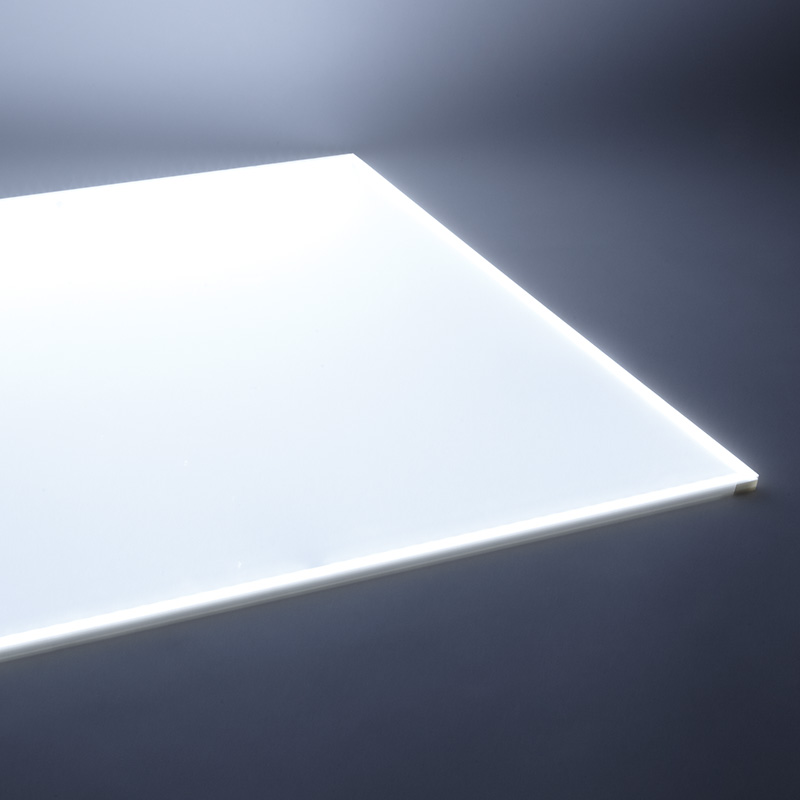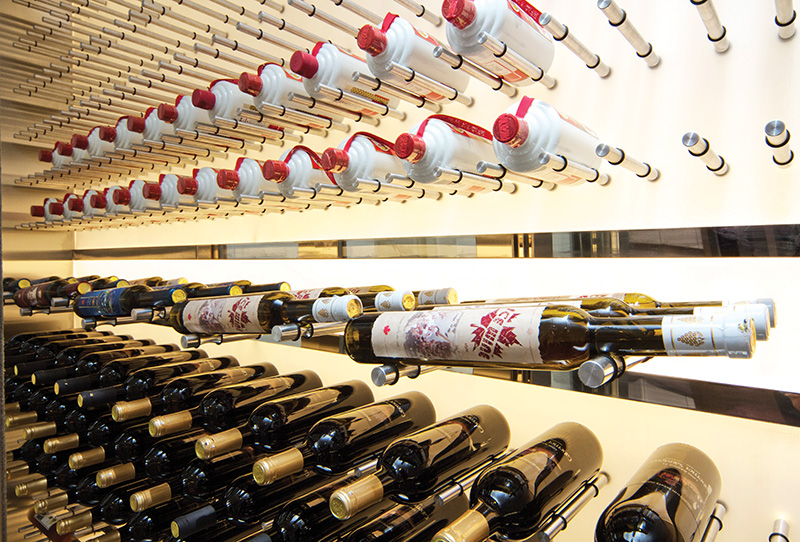LED light panels: Beacons of modern technology providing value, efficiency and performance — beautifully.
By David Morgan
In the restaurant or retail business, image isn’t everything—but it is a very important thing. Visual branding, messaging and merchandising all require keeping pace with the latest in technology. The modern edge-lit LED light panel is one advance that affects each of these important elements—branding, messaging and merchandising.
An LED light panel is a thin sheet of acrylic material with LEDs embedded along one, two, three or four sides. These thin panels can be made in custom shapes and sizes, and arranged to cover large areas such as walls, bars, tables and counters. Light from the LEDs is transferred from the edge to shine outward from the face of the panel. This can be done using either an engraved, etched or printed light guide on the surface.
In some cases, light transfer is entirely seamless. By a using special acrylic with encapsulated microscopic particles, light from the panel is reflected outward and emits entirely evenly across the panel face, without any visible lines or grid pattern. There is no need for additional distance or diffusion between the light panel and the graphic, glass or other translucent material being illuminated.
 LED panels are adaptable and easily customized in size and shape. They are available in a full range of color temperatures from warm (3,000K) to cool (6,500K), adjustable color temperatures, and even RGB options. New advances in drivers and dimming options suit these low-voltage lights for a tremendous variety of uses.
LED panels are adaptable and easily customized in size and shape. They are available in a full range of color temperatures from warm (3,000K) to cool (6,500K), adjustable color temperatures, and even RGB options. New advances in drivers and dimming options suit these low-voltage lights for a tremendous variety of uses.
LED panels are most commonly used for interior signage, graphics, retail POP and fixtures. They are also creatively used in a wide range of architectural accent, decor and detail lighting applications. Popularity is fairly even among both restaurant and retail businesses, with signage the leading application in both.
Edge-lit LED panel technology offers a clear advantage for backlighting and accent lighting in particular. The proof is all around us — poorly-lit fluorescent examples abound in the retail and commercial built environments. Unattractive and outdated signs and displays are all too common. These are often bulky in design to accommodate the short lifespan fluorescent tubes (that contain mercury) they rely upon.
In the face of these inefficiencies and flaws, LED technology stands out as a smart option: minimal maintenance, low environmental impact and improved performance. Because the light source from an LED panel is even from edge to edge, the chances for hot spots and dark areas in menu boards, signs and graphics are eliminated. This improvement alone is often a deciding factor in favor of LED panels — because image matters so much in branding, merchandising and messaging. The smooth, even light of an LED panel is an obvious advantage and improvement.
LED technology is firmly established as an environmentally-friendly, energy-efficient option. Typical power consumption is less than one-quarter of a watt per LED — a dramatic reduction in energy in any traditional backlighting scenario relying on fluorescent tubes. With 50,000 hours of usable lifespan, and a 3-year warranty typical, the man-hour savings from reduced maintenance is also significant.
Edge-lit LED technology isn’t new — yet it’s still underutilized. However, as awareness grows, it is rapidly making inroads and will soon be the standard in new construction and renovations. This only makes sense, as it’s difficult to find a more versatile light source for backlighting — one that clearly saves time, money and energy fairly rapidly.
 While new construction and renovations are now the common points when LED light panels are specified, the retrofitting of existing backlit installations is also an ROI-realistic option. This is particularly true when working with an experienced light panel company that manufactures the panels in the U.S., as opposed to bringing in custom sizes from overseas. Domestic production saves time and expense.
While new construction and renovations are now the common points when LED light panels are specified, the retrofitting of existing backlit installations is also an ROI-realistic option. This is particularly true when working with an experienced light panel company that manufactures the panels in the U.S., as opposed to bringing in custom sizes from overseas. Domestic production saves time and expense.
Retrofits can be fairly straightforward, but do require a UL-listed sign shop for customizing, and the use of UL-recognized components. This also points to finding an experienced supplier and partner to ensure a successful project in terms of budget, timelines and performance.
Backlighting of translucent construction materials, illuminating graphics, glass and signage, providing accent and detail lighting, creating custom overhead lighting — the list goes on for edge-lit LED panel applications. And adoption continues to grow. There are fewer and fewer justifications to ignore this clear technological improvement with so many benefits. Finally, the objection of cost is no longer an issue, as ROI timelines growing shorter and shorter.
Lighting design expert Glenn Johnson, of Adaptive Design Group in Salt Lake City, sums this up perfectly: “LED lighting has, of course, rocked all of our worlds these past few years. By far, LED lighting and its controlling technologies (drives and dimmers) have been the most significant paradigm shift in my 35-year career in lighting.”
As businesses look ahead with the intention of making improvements in efficiency and environmental impact, the new LED panel technology stands out sharply as a wise option — especially for any business that is concerned with presenting its brand in the best light possible.
— David Morgan is the ImagiLux marketing manager at Imagination International Inc., the Oregon-based manufacturer of ImagiLux ultra-thin custom LED panels. He can be reached at [email protected].
